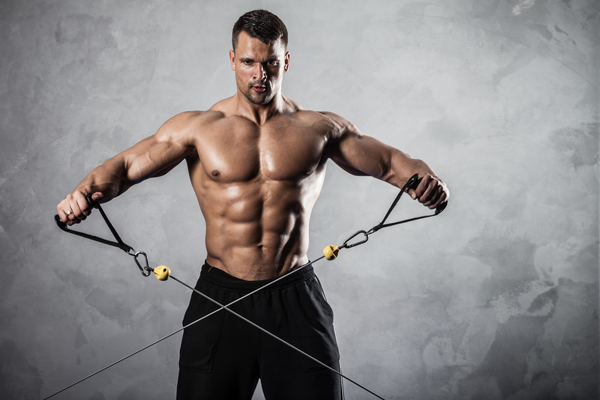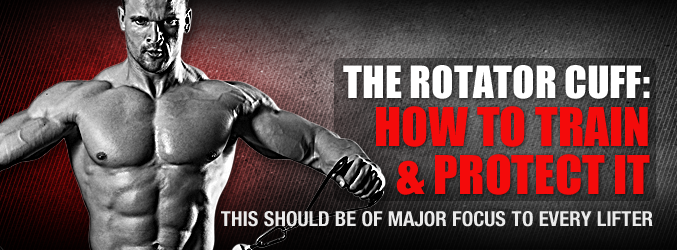
Regret is a very expensive thing. Regret is one of the most costly things that a bodybuilder can face, and it comes in many forms. We may regret training wrong early on. We may regret that late night cheat meal, or the last 3 rounds of drinks the night before a heavy leg day training session. Regret from injuries incurred through bodybuilding training are one of the leading sources of regret among lifters. The costs are many. First off, if you require surgery, you’re going to be spending some money. At the very least, you’re going to be missing training time in the gym. But that’s unavoidable, right?
Some injuries are unavoidable, and can be chalked up to long-term wear and tear of the muscles, tendons, and joints. Other injuries are just plain bad luck. Then there is the third kind – the worst kind. These are the injuries which are completely avoidable. These are the injuries of ego & lack of protection. They are the most regrettable – but the ones you can stop.
The injuries of ego are easy to avoid. Start training for the right reasons, and these injuries will go away. Train to build a bigger, stronger body. Train for bigger muscles capable of greater lifting feats. But don’t train to impress yourself or others. Know your limitations, and break them – slowly, in a measured and controlled manner. Gradually adding weight to the bar each time you train is how you make gains. Slapping a 25 on each end and going for a new PR because your buddies are there to cheer you on is an insane and irresponsible way to train – and the way to see avoidable injuries.
There is another way to prevent injuries, and it is one method you should certainly tackle. This is known as preventative training. Become aware of the most vulnerable areas of the body, and train these areas pre-emptively in order to avoid injury. These may not be the high-end muscle groups you can show off – everyone trains these already. Rather, these groups offer support for training which allow the lifter to build up the foundations of the muscle groups, thus helping to prevent avoidable injuries in the first place. One such area of importance which should be of major focus to every lifter is the rotator cuff.

Let’s look at the rotator cuff. The RC is actually made up of 4 separate muscles. The Infraspinatus externally rotates your humerus. The Teres Minor provides external rotation of the humerus. The Subscapularis rotates the humerus internally. Finally, the supraspinatus abducts the humerus. They work together in a very concerted and fluid motion.
Why is training the rotator cuff important? Many injuries of the shoulders and biceps occur because the very small muscles of the RC joint are weaker than the muscles around them. Sometimes, it’s not a tear, but long term wear and tear of an area which isn’t fully developed, which can lead to pain or injury. The RC stabilizes the shoulder during training. It works as a counter to the deltoid. Training it ensures your shoulder muscles operate and function with a smooth and controlled balance.

Targeting the rotator cuff is easy, and can be done using a soda can or small towel. Hold a small weight in your hands and slowly raise it at a 45 degree angle. Stand with a weight in each hand, with the upper arms pinned against the body, and elbows bent, then slowly move the weight outward, then back in. Standing cable external rotations also provide this benefit. Applying plyometrics can also work, for more advanced lifters. Stick with moderate sets with very low weights. You’re not trying to build up insane levels of new muscle mass. Rather, you’re just trying to develop these very small muscles so that they’ll be able to provide better support to your deltoids as they are worked.
Always warm up before your training sessions. Sure, it’s never fun to watch and empty dumbbell rack slowly fill up with people are you’re completing your 10 minutes of walking and stretching, but the importance of moving blood to the area and warming up the muscle groups for heavy lifting cannot be overstated. Take care of your body, and it’ll take care of you!

Listen to your body. Many lifters will try to push through a nagging pain or injury. They’ll feel a small punch or nagging pain in an area, and because they’re ‘tough’, they will attempt to train through it. This will leave them with greater injuries, perhaps costing them weeks or even months of training as a small issue becomes a very big issue. If you feel pain in the gym or suspect something is wrong, rest the muscle group. If the pain is great or it continues for days, see a doctor and get to the bottom of it! Neglected injuries are one of the leading causes of long-term injuries, some of which never go away. Don’t let that happen to you!
If you do find yourself suffering from rotator cuff injury or soreness, consult your physician. There have been great advances made in physical therapy which can help you to avoid facing a surgeon’s knife. Active release therapy combines massage, movement and electricity, and has proven to be highly useful for those in which traditional treatment means have not been successful.
Wrapping it up
You now possess the tools needed to adequately protect the body from ego lifting and rotator cuff injuries. Put them to good use, and always listen to your body. Injury prevention means you won’t miss the months and years that your injured counterparts face. Good luck!


